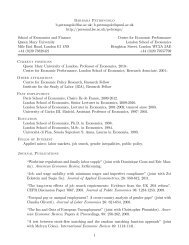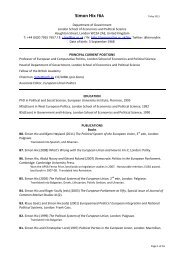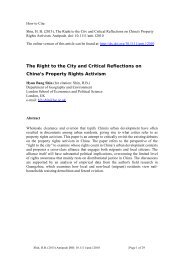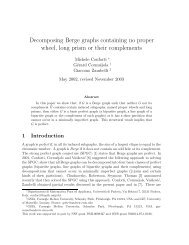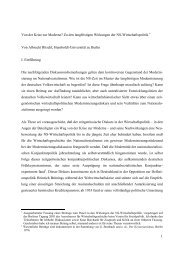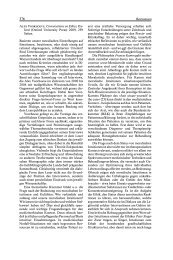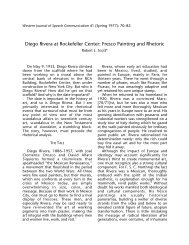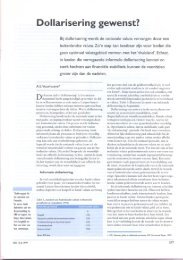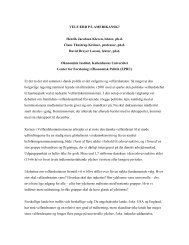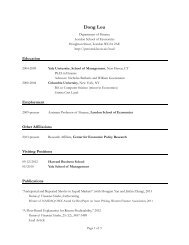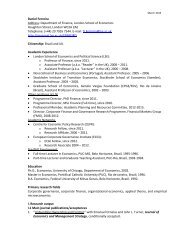Reference: MA, Debin. “The Great Silk Exchange: How the World ...
Reference: MA, Debin. “The Great Silk Exchange: How the World ...
Reference: MA, Debin. “The Great Silk Exchange: How the World ...
Create successful ePaper yourself
Turn your PDF publications into a flip-book with our unique Google optimized e-Paper software.
Europe in “unlimited amounts”. 8<br />
The over-extended Mongol empire began to collapse by <strong>the</strong> mid-fourteenth century.<br />
China was re-united under <strong>the</strong> native Chinese Ming dynasty (1368-1644). But <strong>the</strong> old<br />
problem of controlling <strong>the</strong> Northwestern territories which had haunted every Chinese<br />
emperor since <strong>the</strong> empire’s founding was to surface again and again. Compared with <strong>the</strong><br />
Mongol Yuan dynasty, Ming China’s grip on this territory was much more tenuous. <strong>Silk</strong><br />
trade between China, Central Asia and <strong>the</strong> Middle East went on intermittently, and at times,<br />
according to Morris Rossabi, became very active. It continued into <strong>the</strong> fifteenth and early<br />
sixteenth centuries. <strong>How</strong>ever, periodic warfare and shifting control of territories by<br />
different kingdoms in Central Asia brought severe disruptions to <strong>the</strong> trade. The greatest<br />
menace came from local banditry and extortion, usually due to <strong>the</strong> absence of political and<br />
military protection from powerful empires. This point found reaffirmation from <strong>the</strong><br />
revitalized overland trade between <strong>the</strong> Manchurian Qing China (1644-1911) that brought<br />
effective stability to China’s western territories, and <strong>the</strong> Czarist Russia in <strong>the</strong> eighteenth and<br />
early nineteenth centuries. <strong>Silk</strong> fabrics produced in China’s Lower Yangtze River area went<br />
northward and passed into sou<strong>the</strong>rn Siberia and nor<strong>the</strong>rn central Asia under Russian control<br />
(Fan and Wen 1993: Ch. 11). The success of <strong>the</strong> Russian-Chinese caravan commerce, as<br />
Rossabi argued, hinged on <strong>the</strong> relative safety on <strong>the</strong> nor<strong>the</strong>rn trade routes. Banditry was<br />
virtually nonexistent, and custom duties were minimal, as <strong>the</strong> caravans merely traveled<br />
across one country instead of many disparate petty kingdoms and tribal units (Rossabi<br />
1990: 368).<br />
The fate of <strong>the</strong> <strong>Silk</strong> Road on <strong>the</strong> western end after <strong>the</strong> collapse of Pax Mongolica<br />
8



